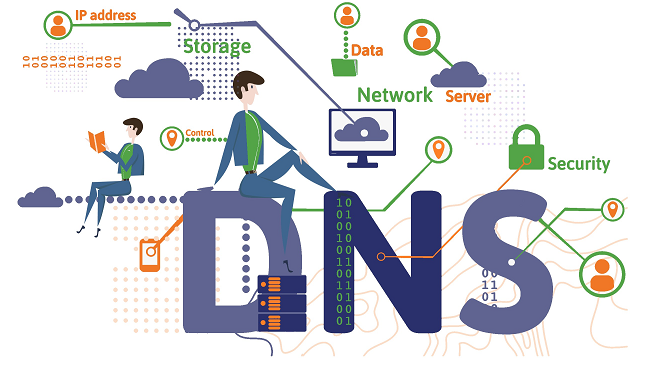Domain and Domain Name System
The literal meaning of domain is range. Domain refers to the area of execution. In terms of technology a domain contains a group of computers that can be accessed and administered with a common set of rules.
For example, a company may require all local computers to be networked within the same domain so that each computer can be seen from other computers within the domain or located from a central server.
Setting up a domain may also block outside traffic from accessing computers within the network, which adds an extra level of security.
While domains can be setup using a variety of networking software, including applications from Novell and Oracle, Windows users are most likely familiar with Windows Network Domains. This networking option is built into Windows and allows users to create or join a domain. The domain may or may not be password-protected. Once connected to the domain, a user may view other computers within the domain and can browse the shared files and folders available on the connected systems.
DNS ( Domain Name System )
The Domain Name System (DNS) is the phonebook of the Internet. Humans access information online through domain names, like nytimes.com or espn.com. Web browsers interact through Internet Protocol (IP) addresses. DNS translates domain names to IP addresses so browsers can load Internet resources. Each device connected to the Internet has a unique IP address which other machines use to find the device.
How does DNS work?The process of DNS resolution involves converting a hostname (such as www.example.com) into a computer-friendly IP address (such as 192.168.1.1). An IP address is given to each device on the Internet, and that address is necessary to find the appropriate Internet device - like a street address is used to find a particular home. When a user wants to load a webpage, a translation must occur between what a user types into their web browser (example.com) and the machine-friendly address necessary to locate the example.com webpage.
In order to understand the process behind the DNS resolution, it’s important to learn about the different hardware components a DNS query must pass between. For the web browser, the DNS lookup occurs “ behind the scenes” and requires no interaction from the user’s computer apart from the initial request.
There are 4 DNS servers involved in loading a webpage:
DNS recursor - The recursor can be thought of as a librarian who is asked to go find a particular book somewhere in a library. The DNS recursor is a server designed to receive queries from client machines through applications such as web browsers. Typically the recursor is then responsible for making additional requests in order to satisfy the client’s DNS query.
Root nameserver - The root server is the first step in translating (resolving) human readable host names into IP addresses. It can be thought of like an index in a library that points to different racks of books - typically it serves as a reference to other more specific locations.
TLD nameserver - The top level domain server (TLD) can be thought of as a specific rack of books in a library. This nameserver is the next step in the search for a specific IP address, and it hosts the last portion of a hostname (In example.com, the TLD server is “com”).
Authoritative nameserver - This final nameserver can be thought of as a dictionary on a rack of books, in which a specific name can be translated into its definition. The authoritative nameserver is the last stop in the nameserver query. If the authoritative name server has access to the requested record, it will return the IP address for the requested hostname back to the DNS Recursor (the librarian) that made the initial request.

Leave Comment